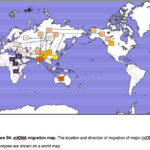
World Science en Route from Out-of-Africa to Out-of-America: First Stop is Out-of-Asia
bioRxiv doi: https://doi.org/10.1101/101410 Yuan, Dejian, Xiaoyun Lei, Yuanyuan Gui, Zuobin Zhu, Dapeng Wang, Jun Yu, and Shi Huang Modern Human Origins: Multiregional Evolution of Autosomes and East Asia Origin of Y and mtDNA Recent studies have established that genetic diversities are mostly maintained…
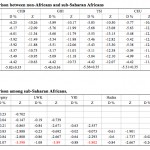
Neandertal Admixture in Africans: A Back-Migration to Sub-Saharan Africa Confirmed
Genome Biology and Evolution 2013 Oct 25. Apparent Variation in Neanderthal Admixture among African Populations is Consistent with Gene Flow from non-African Populations. Shuoguo Wang, Joseph Lachance, Sarah Tishkoff, Jody Hey, and Jinchuan Xing Abstract Recent studies have found evidence of…
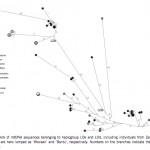
Intense Admixture: Khoisan Clicks and Khoisan Genes in Southeastern Bantu
European Journal of Human Genetics 2012, 1-7 DOI:10.1038/ejhg.2012.192 Genetic Perspectives on the Origin of Clicks in Bantu Languages from Southwestern Zambia Chiara Barbieri, Anne Butthof, Koen Bostoen, and Brigitte Pakendorf Some Bantu languages spoken in southwestern Zambia and neighboring regions…
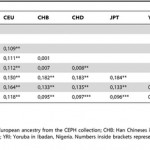
The Xavante Indians and Genetic Divergence Between American Indians and Africans
PLoS ONE 7 (8): e42702. doi:10.1371/journal.pone.0042702 Genome-Wide Analysis in Brazilian Xavante Indians Reveals Low Degree of Admixture Patricia C. Kuhn, Andréa R. V. Russo. Horimoto, José Maurício Sanches, João Paulo B. Vieira Filho, Luciana Franco, Amaury Dal Fabbro, Laercio Joel…
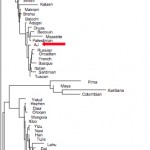
How to Interpret Patterns of Genetic Variation? Admixture, Divergence, Inbreeding, Cousin Marriage
Two different but important population genetics papers have come out. One is Steven Bray et al. (2010) “Signatures of Founder Effects, Admixture, and Selection in the Ashkenazi Jewish Population.” The other one is Isabel Alves et al. (2012) “Genomic Data…

Howler Monkeys, Neandertals, Pygmies, Khoisans and More: Society for Molecular Biology and Evolution 2012
As I write, Society for Molecular Biology and Evolution (SMBE) is conducting its annual meetings in Dublin, Ireland. Dienekes has many useful pullouts from the available abstracts. I will make short comments on a few of them, plus bring in…
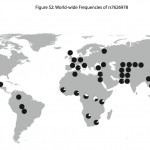
The Pygmy Enigma: Biology, Population Genetics and Linguistics
PLoS Genetics 8 (4): e1002641. doi:10.1371/journal.pgen.1002641 Patterns of Ancestry, Signatures of Natural Selection, and Genetic Association with Stature in Western African Pygmies Jarvis, Joseph P., Laura B. Scheinfeldt, Sameer Soi, Charla Lambert, Larsson Omberg, Bart Ferwerda, Alain Froment, Jean-Marie Bodo,…
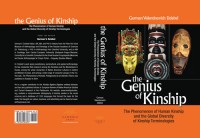
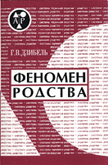
Recent Comments